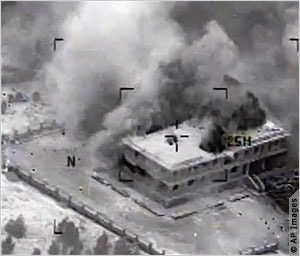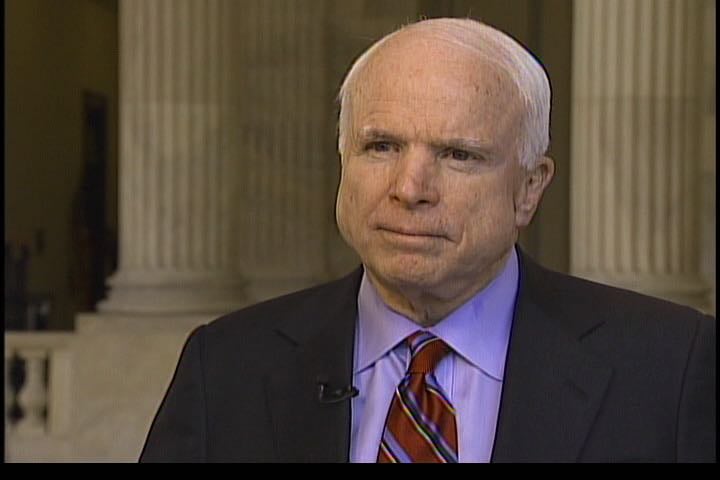WASHINGTON: The enemy of my enemy is….who exactly? That is the question U.S. Central Command planners confronted recently when they targeted the Khorasan Group, a hardcore Al Qaeda cell in Syria suspected of planning terrorist attacks against the United States and Europe. Not surprisingly, the U.S. strikes also killed fighters from the Al-Nusra Front, Al Qaeda’s official Syrian affiliate who were playing host to the Khorasan cell.
But the U.S. attacks also infuriated more secular Syrian rebels who are the United States’ primary proxy in Syria, and who frequently form tactical alliances with Al-Nusra in the fight against their common enemy, the murderous regime of Bashar al-Assad in Damascus. In apparent retaliation for the U.S. air strikes, Al-Nusra fighters joined with frequent competitors but fellow Islamist extremists from the Islamic State of Iraq and Levant (ISIL), the primary U.S. enemy in both countries.
They launched a joint offensive against the U.S.–backed rebels from the Free Syrian Army, who fled north towards the border with Turkey. In recent days there have been reports that Al-Nusra Front and ISIS leaders have met to form a tactical alliance against their mutual enemies.
When a strategy unites your enemies and weakens your friends, it’s time to rethink things. The Obama administration is. In the last week, the White House has convened no less than four meetings of President Obama’s national security team to review its Syria policy, pointing to recognition of a fundamental strategic incoherence at the heart of the current campaign to “degrade and defeat” ISIS. According to a number of sources, the confusion results from the administration having adopted a phased approach to its campaign, without publicly acknowledging that the culminating phase will almost certainly result in the ouster of Bashar al-Assad in Syria.
As any student of military history knows, hiding your strategy from the enemy (and sometimes your friends) — even in a democracy — is often a fundamental requirement for success.
“Internally within the administration there is still an accepted political end game for Syria expressed in the policy that ‘Assad must go,’ but what the public is picking up as confusion is really diplomatic ambiguity as officials try to keep a lot of disparate partners united in the anti-ISIS coalition,” says Dafna Rand, She worked on the staff of the National Security Council until recently and is now deputy director of Studies at the Center for a New American Security. In talks with regional allies and with Iran and Russia, Secretary of State John Kerry reportedly continues to raise the possibility of a deal that ousts Assad from power.
“The real fundamental question that continues to stump policymakers is how to break the ties between Russia and especially Iran and the Assad regime,” said Rand. “In the meantime I don’t think Assad should take too much comfort in the fact we are now targeting his enemies in ISIS. If you look at other places where the U.S. has intervened with airpower, it didn’t end well for local despots like Assad.”
Treating the Symptoms
Though they haven’t yet conceded the point publicly, senior Obama administration officials know that the logic of politics, diplomacy and military operations all point to Bashar al-Assad ending up in the crosshairs of the U.S. campaign to “degrade and defeat” ISIS.
In terms of politics, GOP Sen. John McCain will soon wield the gavel as chairman of the powerful Senate Armed Services Committee (SASC), where he will undoubtedly continue to pound home the point that an accelerated U.S. initiative to arm, train and equip Free Syrian Army forces will inevitably bring the U.S. a major step closer to direct confrontation with Assad’s regime. During September 16 testimony before the SASC by Defense Secretary Chuck Hagel, and Chairman of the Joint Chiefs Gen. Martin Dempsey, for instance, McCain asked both men what their response would be if Assad’s air forces attacked U.S.-backed Syrian rebel forces.
“It seems to me that you have to neutralize Bashar al-Assad’s air assets, if you are going to protect these people that we are arming and training and sending in to fight. Is that inaccurate, General Dempsey?” asked McCain.
Dempsey did not deny McCain’s argument, but answered that “we can defer that decision into the future.” Privately, knowledgeable sources say that the Joint Chiefs are already discussing how U.S. forces can best protect and leverage the Syrian proxy force in ways that undermine the Assad regime. As for Hagel, he replied to McCain that in the case of “any attack against those we trained, we will help them.” Hagel is known to have sent a detailed memo to National Security Adviser Susan Rice expressing deep concern about the current Syria strategy, and arguing that the U.S. needs “to have a sharper view of what to do about the Assad regime.”
In terms of diplomacy, Secretary of State Kerry is also said to believe a strategy that doesn’t include a transfer of power away from Assad is unrealistic, but he has been unable in two earlier rounds of negotiations in Switzerland to convince Iran and Russia to stop supporting Assad. While all this is going on, the State Department is engaged in delicate negotiations with Iran about its nuclear program, and with Russia over its continued support for separatist rebels in eastern Ukraine, and may not be willing in the short-term to jeopardize those talks with an ultimatum on Assad.
Key regional allies whose cooperation the U.S. will need to succeed in its anti-ISIS campaign, however, are pressing hard for the United States to make the ouster of Assad an integral part of its strategy. Turkey and Saudi Arabia have been especially forceful in arguing that their support for the U.S. campaign is contingent on an end game that doesn’t include Assad.
“The administration is treating the symptoms in Syria, and not the disease, which is Assad,” said Turki Al Faisal, former intelligence chief of Saudi Arabia, and current chairman of the King Faisal Center for Research and Islamic Studies, speaking last week at the Brookings Institution.
“The situation in Syria is extraordinarily complicated on a tactical level, but strategically it’s pretty clear: at some point military logic will drive us inexorably towards the conclusion that Bashar al-Assad really must go,” said Christopher Harmer, a senior analyst with the Institute for the Study of War. The major regional allies whose support the United States needs to succeed in the conflict – Saudi Arabia and the Persian Gulf States, Jordan, Turkey, and Sunni tribal leaders in Iraq – are all sending the same message. “Assad is the original sin that gave rise to all these extremist groups, and as long as he is in power in Damascus we will never truly defeat ISIS or reach an acceptable outcome in Syria.”
Militarily, there are already signs of strain in the U.S. strategy of treating Iraq as the main effort in its war with ISIS, with the Syrian front only an afterthought. Recent events suggest that until the U.S. openly supports the ouster of Assad, the Syrian proxy force of between 5,000 and 15,000 “moderate” and vetted rebels is unlikely to materialize in time, if at all, or else will prove prone to aligning itself with Islamic extremists who share its ultimate objective of getting rid of Assad. Some experts also believe that Russia and Iran will refuse to drop their support for Assad as long as U.S. commitment and goals remain ambiguous.
“The administration is trying to walk a very fine diplomatic line, but the reality is that civil wars have always created horrible terrorist groups, and the only way to defeat groups like ISIS is to end the civil war – and that means getting rid of Assad,” said Kenneth Pollack, a former CIA Middle East analyst and currently a senior fellow at the Brookings Institution. “And the only way to convince Russia and Iran to abandon their support for Assad is to make clear that he will be on the losing side, and thus a liability.”
Major trends and takeaways from the Defense Department’s Unfunded Priority Lists
Mark Cancian and Chris Park of CSIS break down what is in this year’s unfunded priority lists and what they say about the state of the US military.




























